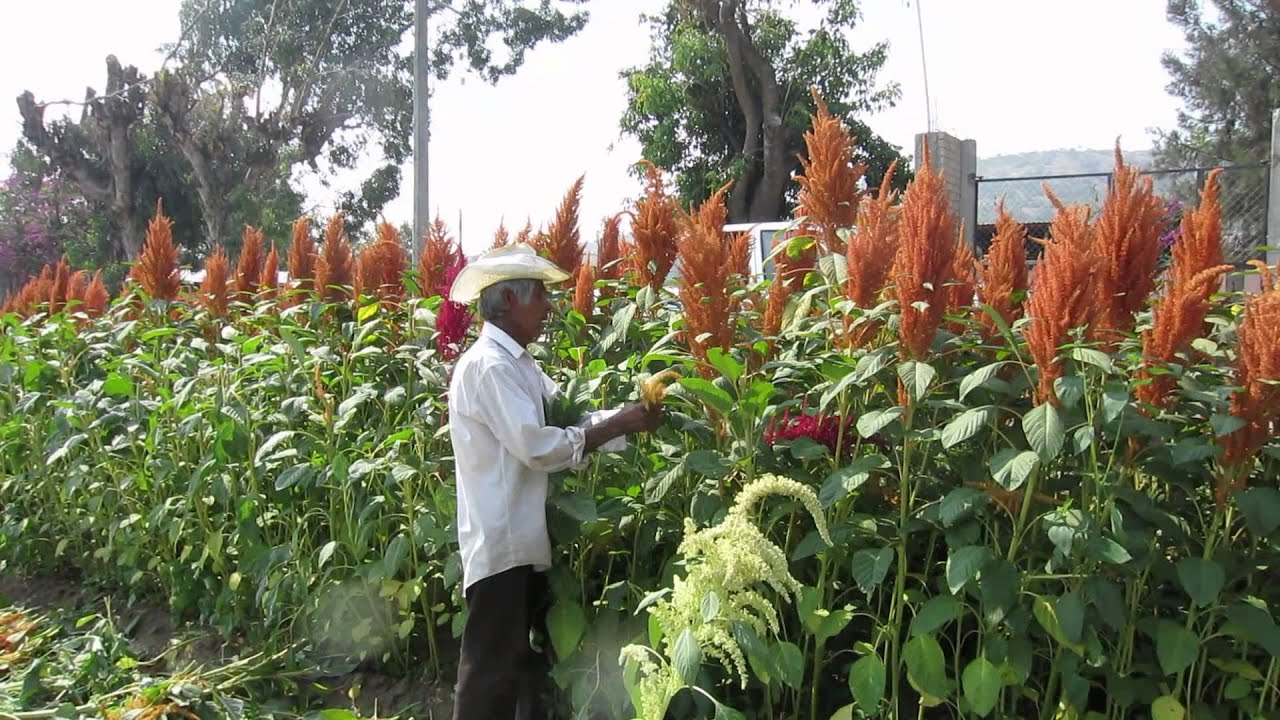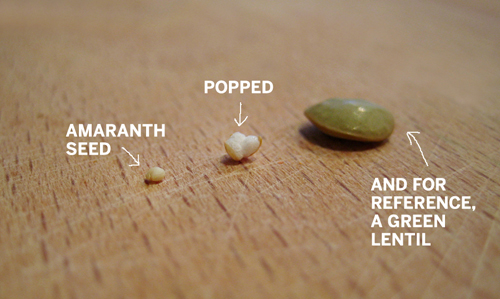Living on a farmstead, my plan to survive a crisis involves ramping up my food production to become self reliant. To be able to accomplish this, I keep hundreds of pounds of garden seed in storage... both in the freezers and in storage pails in my temperature controlled prepper room. I store all sorts of garden seed but the majority are the three sisters... field corn, pole beans & winter squash. I also make sure to stock plenty of seed for the cool weather crops, such as peas & greens, so to ensure we are growing food almost year round.
But if I had to choose just one seed to keep, it would be amaranth. It is grown all over the world and was a major crop for the Aztecs. It requires little or no fertilizer and needs little water. Many folks know amaranth from one of the weed varieties knows as pigweed, which spreads like crazy & is hard to kill. Those weed like traits are included in the food varieties, which makes it such an easy crop to grow. The seeds are tiny and just a single pound of seed will contain around 600,000 seeds. Read that again. 600,000 seeds. As a prepper, think about having 600,000 seeds of a superfood and only having to store a single pound.
What makes amaranth so valuable as a food crop and so important for preppers is that you can eat the whole plant. Amaranth is related to spinach and the young leaves can be eaten raw. As the plant matures, the larger leaves can be cooked like greens. These leaves are considered more nutritious than spinach. The seeds at the top can be ground into flour and has more protein & nutrition than normal grains. The protein in amaranth is complete because it contains lysine, an amino acid missing or negligible in many grains.
In a crisis environment, with my large seed stores, I would broadcast the seed and not worry about the plants being too close together. As the young plants start growing, one simply thins them out and eats the entire small plants being harvested. Then as the remaining plants grow to maturity, one could harvest leaves throughout the summer & then collect the seed later. If one only had a pound of seed, you could be more careful in the planting so as to maximize the harvest of full sized plants. Each plant can produce a minimum of 100,000 seed, so it will be incredibly easy to store a huge number of seeds for the following year.
Another benefit of amaranth, for a prepper, is that the plants look like weeds. Anyone can recognize a field of corn or beans but few could do so with amaranth... especially if broadcast planted and not in rows. Stealth is critical in so may areas of prepping. If stealth is critical in your location, then one could plant many small, irregular patches to not draw attention to your crop. Another cool feature is that the plant easily reseeds itself. With all those seeds produced by each plant, some will fall to the ground even when being harvested. A plot of amaranth will come back next year all by itself... just like a weed.
Long story short, IMO all preppers should include at least a pound of amaranth seed in their stores... even if bugging out. That one pound of seed could grow an amazing amount of food, even for folks that know little about gardening. In Jamaica, the plant and cooked leaves are called callaloo.



But if I had to choose just one seed to keep, it would be amaranth. It is grown all over the world and was a major crop for the Aztecs. It requires little or no fertilizer and needs little water. Many folks know amaranth from one of the weed varieties knows as pigweed, which spreads like crazy & is hard to kill. Those weed like traits are included in the food varieties, which makes it such an easy crop to grow. The seeds are tiny and just a single pound of seed will contain around 600,000 seeds. Read that again. 600,000 seeds. As a prepper, think about having 600,000 seeds of a superfood and only having to store a single pound.
What makes amaranth so valuable as a food crop and so important for preppers is that you can eat the whole plant. Amaranth is related to spinach and the young leaves can be eaten raw. As the plant matures, the larger leaves can be cooked like greens. These leaves are considered more nutritious than spinach. The seeds at the top can be ground into flour and has more protein & nutrition than normal grains. The protein in amaranth is complete because it contains lysine, an amino acid missing or negligible in many grains.
In a crisis environment, with my large seed stores, I would broadcast the seed and not worry about the plants being too close together. As the young plants start growing, one simply thins them out and eats the entire small plants being harvested. Then as the remaining plants grow to maturity, one could harvest leaves throughout the summer & then collect the seed later. If one only had a pound of seed, you could be more careful in the planting so as to maximize the harvest of full sized plants. Each plant can produce a minimum of 100,000 seed, so it will be incredibly easy to store a huge number of seeds for the following year.
Another benefit of amaranth, for a prepper, is that the plants look like weeds. Anyone can recognize a field of corn or beans but few could do so with amaranth... especially if broadcast planted and not in rows. Stealth is critical in so may areas of prepping. If stealth is critical in your location, then one could plant many small, irregular patches to not draw attention to your crop. Another cool feature is that the plant easily reseeds itself. With all those seeds produced by each plant, some will fall to the ground even when being harvested. A plot of amaranth will come back next year all by itself... just like a weed.
Long story short, IMO all preppers should include at least a pound of amaranth seed in their stores... even if bugging out. That one pound of seed could grow an amazing amount of food, even for folks that know little about gardening. In Jamaica, the plant and cooked leaves are called callaloo.



Last edited:

















